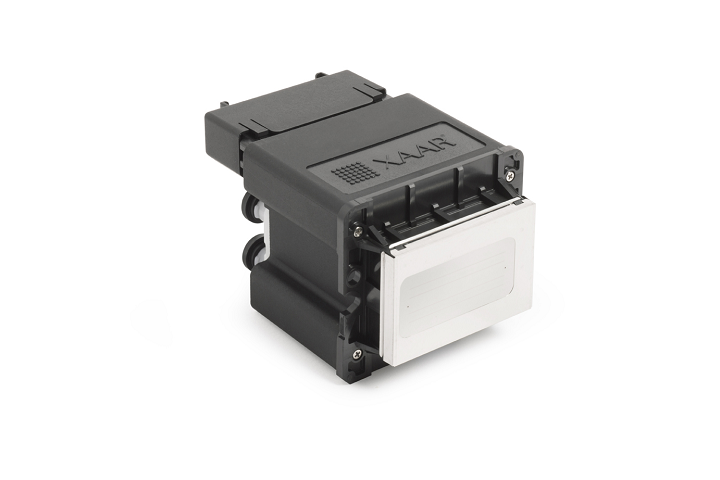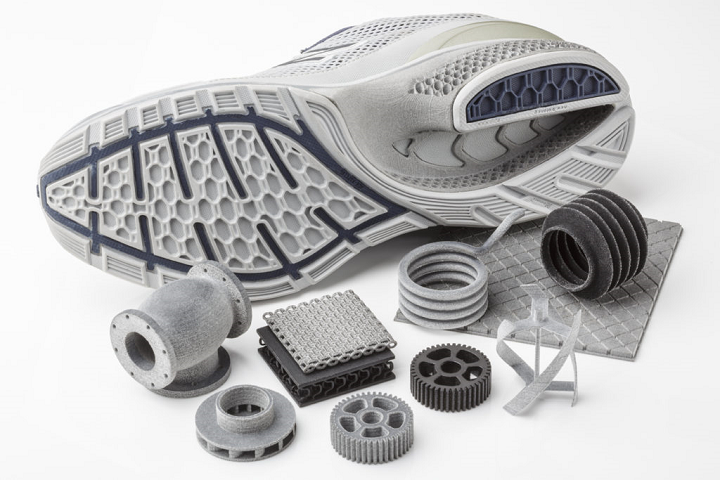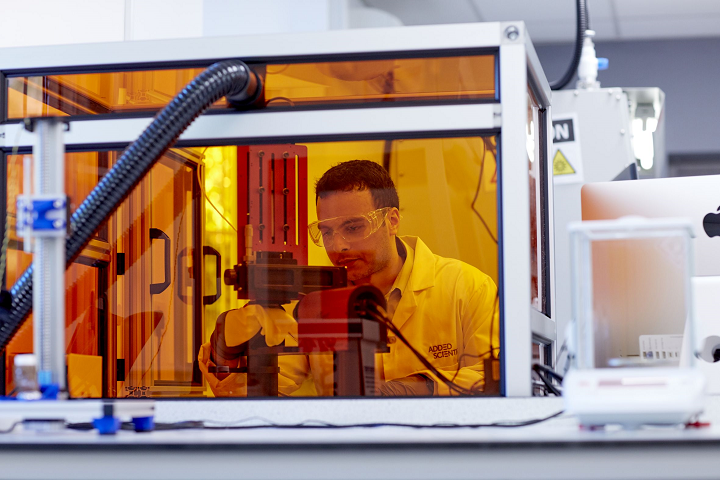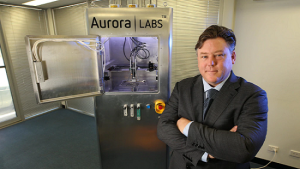Stratasys and 3D LifePrints are hiring, the latest 3D printing jobs and career moves in the additive manufacturing industry
Additive Manufacturing Optimization: Xaar’s Five-Step Evaluation Service Refines InkJet Printing
UK-headquartered Xaar is launching a new service for evaluating inkjet quality in product development in 3D printing and additive manufacturing processes. This new evaluation service allows industrial users and other companies to take advantage of AM processes with the ability to create products never before possible with conventional methods—and to do so rapidly and much more affordably–from the outset without bringing in a host of startup costs.
 Founded over 25 years ago, Xaar is a leader in digital inkjet technology, on a mission to manage greater efficiency in printing and manufacturing. Their development team also designs new printheads for product decoration systems and other industrial 3D printing applications requiring inkjet technology.
Founded over 25 years ago, Xaar is a leader in digital inkjet technology, on a mission to manage greater efficiency in printing and manufacturing. Their development team also designs new printheads for product decoration systems and other industrial 3D printing applications requiring inkjet technology.
In preparation for their new inkjet evaluation service, the Xaar team has built a dedicated lab for sample production and testing.
“Inkjet technology is now highly relevant across a multitude of new product development applications, and we wanted to enable companies to be able to review the suitability of inkjet printing in their product development programs without the need for significant capital investment or upfront costs,” says Mike Seal, Xaar’s Business Development Manager, Advanced Manufacturing and 3D Printheads.
 While the lab includes a variety of customized hardware, they are also using a Notion Systems n.jet 3D printer, accompanied by Xaar 1003 GS12 printheads. With photopolymer jetting (PPJ), users can specify printing layers between 0.0185mm – 0.0025mm. The n.jet prints each layer in around six seconds, allowing for fabrication of detailed features as small as 0.1mm.
While the lab includes a variety of customized hardware, they are also using a Notion Systems n.jet 3D printer, accompanied by Xaar 1003 GS12 printheads. With photopolymer jetting (PPJ), users can specify printing layers between 0.0185mm – 0.0025mm. The n.jet prints each layer in around six seconds, allowing for fabrication of detailed features as small as 0.1mm.
The evaluation process employs five phases:
- Stage One – Users develop ink and assess material compatibility—along with comprehensive rheology testing and fluid measurement.
- Stage Two – Optimization of jetting includes configuring printhead waveforms, along with further refining the performance of inkjet fluids and applications overall.
- Stage Three – Samples are produced in the laboratory using a custom test rig.
- Stage Four – Users are ready to improve development applications, using the Xaar inkjet system.
- Stage Five – Projects are finished, providing ongoing support of technology, any application improvements, and both testing and necessary guidance.
With the five-step evaluation, users are also able to assess high-viscosity fluids which can now also be used with success in Xaar’s printheads; in fact, materials with viscosities ranging from 10-25 mPa.s (10-25 cP) can be used.
“Providing access to our inkjet development expertise through our 5-step service helps clients get to market quicker by reducing their own development timelines and costs. From 3D printing through to functional fluid applications such as optics and flat panel displays, the possibilities and applications for inkjet printing are extremely diverse, and our dedicated team and 5-step service is here to support throughout each development project,” concludes Mike.
“Providing access to our inkjet development expertise through our 5-step service helps clients get to market quicker by reducing their own development timelines and costs. From 3D printing through to functional fluid applications such as optics and flat panel displays, the possibilities and applications for inkjet printing are extremely diverse, and our dedicated team and 5-step service is here to support throughout each development project,” concludes Mike.
In labs around the world, inkjet technology continues to progress, depending on user needs—motivating innovation in microjetting and bioprinting, liquid metal, ceramic, and more. What do you think of this news? Let us know your thoughts! Join the discussion of this and other 3D printing topics at 3DPrintBoard.com.
[Source / Images: Xaar]
The post Additive Manufacturing Optimization: Xaar’s Five-Step Evaluation Service Refines InkJet Printing appeared first on 3DPrint.com | The Voice of 3D Printing / Additive Manufacturing.
CRP Technology releases High Speed Sintering material, Windform P2
voxeljet enhances HSS to 3D print single parts with multi-material properties
Stratasys increases investment in Xaar 3D to 45% with option for takeover
Stratasys Increases Stake in Xaar 3D to 45%
For years I’ve been saying that the ideal combination of 3D printing methods would be the color options of inkjet combined with the low cost, durability, and toughness of FDM parts. This approach is similar to what Rize is doing. It seems that this kind of thinking may also be on the minds of Stratasys. Or perhaps the company that has the inkjet-based UV technology Polyjet for years, wants to double down on that?
 Stratasys has just increased its stake in Xaar 3D from 15 to 45% and has an option to acquire the inkjet 3D printing firm. The other 55% is held by Xaar plc.
Stratasys has just increased its stake in Xaar 3D from 15 to 45% and has an option to acquire the inkjet 3D printing firm. The other 55% is held by Xaar plc.
The inventors of FDM have lately branched out into a number of new technologies. Through its Stratasys Direct subsidiary, it is one of the largest selective laser sintering machine operators worldwide. Recently the company released its own stereolithography 3D printer as well for fine parts and molds. The company has invested in firms before and partnered with the likes of Desktop Metal. Now the firm has taken a total 45% stake in Xaar 3D. It seems that Stratasys is eager to diversify its technology base and achieve more paths to parts.
Xaar is a manufacturing company for inkjet print heads. The firm entered the 3D printing market a few years ago. As we observed the interesting thing about Xaar was that you could approach the company and work with them on developing new technologies for printheads. Its open printheads approach was a unique path to market and made it possible for more firms to use inkjet in 3D printing. Xaar previously also opened its wallet and used its expertise to help Neil Hopkinson achieve his dream of HSS, a high-speed sintering technology which could significantly speed up the powder bed fusion process. In July we reported that Stratasys also invested in HSS together with Xaar.
It seems that Stratasys is looking for more HSS exposure. It doesn’t make sintering systems currently and adding HSS to its arsenal could help its service business and help it round out its portfolio. Simply put, FDM is a great technology to getting fairly quickly parts that are tough and durable and relatively large. If you want 10,000 of something ping pong ball-shaped however powder bed fusion is better. Powder bed technologies can also give you good detail and are good for applications such as surgical guides. By replacing its current arsenal of EOS equipment with HSS, Stratasys may see a huge boost for its Stratasys Direct business while also being able to compete more directly with EOS. This move really puts pressure on EOS and would give Stratasys a very well rounded manufacturing solution array for customers. Stratasys could also have more designs on inkjet, using inkjet to enter into the metal printing market via binder jet for example or using Xaar’s expertise to improve Polyjet printing.
“Xaar 3D Ltd has great potential and we look forward to continuing to work with Stratasys to develop its full potential in this deeper relationship. I am pleased that this transaction will create good value for Xaar shareholders and unlocks the ability for more significant value in due course.” said Doug Edwards, Chief Executive Officer, Xaar plc.
“Xaar 3D has made significant progress over the past year and we see benefits to Stratasys in extending its investment in Xaar 3D’s innovative High Speed Sintering based solutions. We look forward to continue developing the technology together with Xaar and believe the combined expertise of both parties will lead to exploitation of the technology’s promising potential.” said Omer Krieger, EVP Products. “This continues our company’s strategy of complementing our own robust R&D efforts with partnerships and investments in other innovative companies to develop new capabilities and products that create new value to our customers.”
From the press releases, the focus should be on HSS which could potentially significantly speed up 3D printing as we know it. As a side note, this could be a potential blow to Ricoh that traditionally has supplied the Polyjet printheads.
The post Stratasys Increases Stake in Xaar 3D to 45% appeared first on 3DPrint.com | The Voice of 3D Printing / Additive Manufacturing.
Added Scientific Used Xaar Printhead in Pilot Project for 3D Printing Personalized Pharmaceuticals
Cambridge-based company Xaar may have had its start in developing piezoelectric, drop-on-demand industrial printheads, but transitioned to the 3D printing world back in 2014 when it helped develop the high speed sintering (HSS) FACTUM 3D printer. Xaar is also a leading developer of digital inkjet printing technology, and is currently helping research organization Added Scientific, headquartered in Nottingham, as it works to determine how suitable inkjet printing is in fabricating personalized pharmaceuticals.
Added Scientific, a spinoff company from the University of Nottingham, is using Xaar’s 1201 printhead to bring personalized medicine, with dosages tailored to individual people on an industrial scale, just one step closer to reality.
Craig Sturgess, Research Manager for Added Scientific, said, “Inkjet printing offers the ability to digitally control the printing with its precision placement of tiny droplets a few picolitres in size and the capability to place multiple materials to create complex multi-functional objects in 2D & 3D.
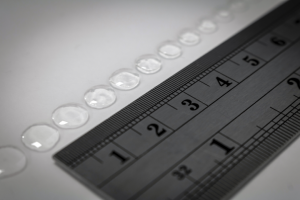 The project was initiated by Added Scientific with its collaborating partners Xaar and global pharmaceutical company AstraZeneca and funded under the UK government’s Industrial Strategy Challenge Fund’s Medicines Manufacturing Challenge, with additional support from Innovate UK. They’re building on research previously conducted at the university regarding the development of excipients: everything but the active pharmaceutical ingredient (API). This pilot project is looking at the long-term suitability and scalability of using inkjet printing to dispense APIs.
The project was initiated by Added Scientific with its collaborating partners Xaar and global pharmaceutical company AstraZeneca and funded under the UK government’s Industrial Strategy Challenge Fund’s Medicines Manufacturing Challenge, with additional support from Innovate UK. They’re building on research previously conducted at the university regarding the development of excipients: everything but the active pharmaceutical ingredient (API). This pilot project is looking at the long-term suitability and scalability of using inkjet printing to dispense APIs.
“Trial research carried out previously has shown that inkjet offers a real potential for printed medicines. This project was designed to answer questions pharmaceutical companies have around the suitability of inkjet printing in dispensing APIs at a scale that made both manufacturing and economic sense,” Sturgess continued.
The project partners used the Xaar 1201 printhead with one of the university’s formulations to evaluate its impact on the API, in addition to how well it can operate under Good Manufacturing Practice (GMP) conditions. GMP is the de facto standard for manufacturing in the pharmaceutical industry. They also studied if the formulation had an effect on the life of the printhead, and rounded out their experimental trials by evaluating AstraZeneca’s data from conventional tablet manufacturing against inkjet printing process times.
“The Xaar 1201 is ideal for a wide range of industrial applications including Advanced Manufacturing due to its ability to print fluids with a range of viscosities, reactivity and conductivity. This pilot project has demonstrated the Xaar 1201’s versatility for pharmaceuticals and how inkjet printing is proving itself to have the potential to drive innovation as well as efficiencies in many areas of 21 st century life,” stated Mike Seal, Business Development Manager, Advanced Manufacturing, at Xaar.
The results from the team’s project showed significant time saved in unit process times from inkjet printing in comparison to conventional manufacturing methods. Production trials consisted of 1,000 dosage forms printed in batches of 100, and no issues or interaction with the API occurred in Xaar’s 1201 printhead; additionally, there was no impact on the life of the printhead itself.
“These are exciting times. Our project has clearly shown that printing personalised medicines – with all their advantages of dose and design freedom – is no longer just a theory, but a scalable and economic reality for pharmaceutical companies and we look forward to extended trials to confirm these findings,” Sturgess concluded.
Added Scientific and its project partners are certainly not the first to investigate the idea of using 3D printing to fabricate personalized medication, and I doubt they will be the last. However, inkjet printing is not typically used to make 3D printed medication, so it will be interesting to see what the team’s next steps will be.
Discuss this story and other 3D printing topics at 3DPrintBoard.com or share your thoughts in the Facebook comments below.
[Images: Xaar]
3D Printing News Briefs: October 27, 2018
We’re starting off with some news about products being displayed at the upcoming formnext in today’s 3D Printing News Briefs, and then moving on to business and research news. Clariant and Xaar have both revealed what they will be showcasing at formnext 2018 in Munich next month. Aurora Metals has announced a new partnership, while Lockheed Martin is the first organization to have an additive manufacturing facility certified to UL 3400 for AM hazards. Finally, America Makes has announced its next Directed Project Opportunity.
Clariant Presenting Industrial 3D Printing Materials at formnext
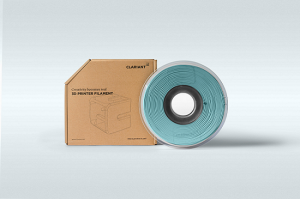 This year’s formnext is coming up in just a few short weeks, and companies all over the world are announcing what products they’ll be bringing with them to the show. Specialty chemicals company Clariant will be showcasing its 3D printing materials and solutions for intelligent industrial manufacturing at the event this year, including featured materials like polyamides for small lot production, customer-tailored colorant and additive guidance, and high impact strength materials that offer electrostatic discharge protection for manufacturing aids.
This year’s formnext is coming up in just a few short weeks, and companies all over the world are announcing what products they’ll be bringing with them to the show. Specialty chemicals company Clariant will be showcasing its 3D printing materials and solutions for intelligent industrial manufacturing at the event this year, including featured materials like polyamides for small lot production, customer-tailored colorant and additive guidance, and high impact strength materials that offer electrostatic discharge protection for manufacturing aids.
“OEMs require that 3D printing materials perform at the same level as their injection molded counterparts. This was the significant factor in achieving the acceptance to allow product production with our materials and will continue to be,” said Joanna Marguier, Senior Manager of R&D for Clariant’s 3D printing business. “From the inception of our 3D printing business, Clariant has focused on providing superior 3D printing materials that achieve the customer’s requirements for their specific application. We work closely with them to tailor solutions to meet their needs.”
Marguier will also be outlining the company’s success with flame retardants in a technical presentation at formnext on November 15. formnext runs November 13-16, and you can visit the Clariant team at booth 3.1-H40 in Hall 3.1 at the Messe Frankfurt.
Xaar Showcasing Latest Inkjet Printhead Technology at formnext
 Speaking of formnext, digital inkjet technology Xaar will be exhibiting the latest in inkjet printhead technology at the show. Visitors can learn how the company’s award-winning High Laydown (HL) technology, which allows for the jetting of 3D fluids with high viscosity (at least 55cP), coupled with its partnerships with other industry leaders, can help its customers get ahead in volume 3D printing. Xaar will also be displaying samples that were produced with high viscosity photoresins from BASF 3D Printing Solutions
Speaking of formnext, digital inkjet technology Xaar will be exhibiting the latest in inkjet printhead technology at the show. Visitors can learn how the company’s award-winning High Laydown (HL) technology, which allows for the jetting of 3D fluids with high viscosity (at least 55cP), coupled with its partnerships with other industry leaders, can help its customers get ahead in volume 3D printing. Xaar will also be displaying samples that were produced with high viscosity photoresins from BASF 3D Printing Solutions
“The formnext show is a major global event for the 3D Printing sector and we are excited to be exhibiting our complete printhead portfolio and HL Technology for volume 3D production. We pride ourselves on providing ongoing support to all our customers’ projects – from early fluid evaluation through to commercialisation. That’s why we are welcoming manufacturers and integrators to visit the Xaar stand and discover how our printhead technology can help them introduce new printers quickly and cost-effectively, thereby delivering a true competitive edge and real value to 3D end- users,” said Simon Kirk, Senior Product Manager at Xaar.
You can visit Xaar at formnext at booth A78 in Hall 3.1
Aurora Labs Partnering with Fortescue Metals Group
Australian metal 3D printing Aurora Labs has signed a preliminary non-binding term sheet agreement with fellow Australian company Fortescue Metals Group. The agreement comprises an Industry Partner Program, and Aurora Labs will work with Fortescue to demonstrate the potential for application of its Rapid Manufacturing Technology (RMT) in the mining industry. The terms of the agreement are for an initial 12 months and may be extended by mutual agreement, and Aurora believes that the venture could even progress further to developing technology together in order to lower operation and production costs in the mining industry.
“We’re very excited to sign a preliminary agreement with Fortescue, and pursue the opportunity to apply Aurora’s Rapid Manufacturing Technology to the mining sector,” said David Budge, Aurora Labs’ Managing Director. “Fortescue are an ideal industry partner for us and they are at the forefront of technological advancements in the mining sector.”
Lockheed Martin Certified UL 3400
![]() Top global safety science company UL has announced that it has certified the first additive manufacturing facility to UL 3400, a set of safety guidelines published last year that address the hazards associated with AM facilities. UL issued this prestigious certification to Lockheed Martin, and its 6,775-square-foot Additive Design and Manufacturing Center in Sunnyvale, California. UL 3400, also called the Outline of Investigation for Additive Manufacturing Facility Safety Management, considers the three layers of safety: material, equipment, and the facility itself, and references applicable standards from OSHA, ASTM International, the National Fire Protection Association, and others. UL and its 3400 guideline cover the potential hazards and risk mitigation measures that are required for these facilities to function safely.
Top global safety science company UL has announced that it has certified the first additive manufacturing facility to UL 3400, a set of safety guidelines published last year that address the hazards associated with AM facilities. UL issued this prestigious certification to Lockheed Martin, and its 6,775-square-foot Additive Design and Manufacturing Center in Sunnyvale, California. UL 3400, also called the Outline of Investigation for Additive Manufacturing Facility Safety Management, considers the three layers of safety: material, equipment, and the facility itself, and references applicable standards from OSHA, ASTM International, the National Fire Protection Association, and others. UL and its 3400 guideline cover the potential hazards and risk mitigation measures that are required for these facilities to function safely.
“Employers, employees, local regulators as well as insurance companies who have to underwrite additive manufacturing facilities, were not fully aware of the inherent material and technology risks. Safety is designed rather than built. Not a single standard or statutory guideline was available that specifically focused on additive manufacturing. Other standards and guidelines were developed for conventional manufacturing processes,” explained Balu V. Nair, UL’s Additive Manufacturing Lead Development Engineer and an important player in developing UL 3400. “We decided to address this industry need by developing a set of guidelines with exclusive focus on additive manufacturing.”
America Makes Announces Next Directed Project Opportunity
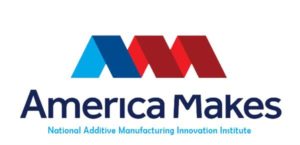 This week, America Makes announced its next Directed Project Opportunity, available for its members for AM applied (R&D) projects for Advanced Tools for Rapid Qualification (ATRQ). The goal is to promote and accelerate the development and deployment of cost effective, energy-efficient 3D printing technologies in order to meet defense and/or commercial needs. Approximately $3.9 million should be made available to fund multiple awards, with at least $1.95 million in matching funds from the winning project teams. The technical requirements of the ATRQ Directed Project Opportunity relate to the America Makes Technology Roadmap, as well as the Integrated DoD AM Roadmap.
This week, America Makes announced its next Directed Project Opportunity, available for its members for AM applied (R&D) projects for Advanced Tools for Rapid Qualification (ATRQ). The goal is to promote and accelerate the development and deployment of cost effective, energy-efficient 3D printing technologies in order to meet defense and/or commercial needs. Approximately $3.9 million should be made available to fund multiple awards, with at least $1.95 million in matching funds from the winning project teams. The technical requirements of the ATRQ Directed Project Opportunity relate to the America Makes Technology Roadmap, as well as the Integrated DoD AM Roadmap.
“For our partners at the DoD, the anticipated outcomes of the America Makes ATRQ Directed Project Opportunity are of the utmost importance. The DoD’s need for rapid qualification and certification of AM processes and materials is great,” said Rob Gorham, the Executive Director of America Makes. “These projects will be instrumental in resolving the current deterrents that are hindering the wider adoption and deployment of AM technologies within the DoD and its supply chain.”
Technical topics for the ATRQ Directed Project Opportunity are Surrogate Damage Generation for LPBF Defects, Degradation of Polymer Parts Deployed in Harsh Environments, and Corrosion Mechanisms of LPBF Materials. All Project Concept forms are due no later than 5 pm EST on Wednesday, November 28, 2018. To see all of the technical project requirements, as well as other information about the Directed Project Opportunity like non-disclosure agreements, eligibility, and the proposal process, check out the America Makes website.
Discuss these stories and other 3D printing topics at 3DPrintBoard.com or share your thoughts in the Facebook comments below.
Find Prodways, Farsoon, Stratasys, Sabic and more 3D printing at Formnext 2018
 Formnext, the largest additive manufacturing and 3D printing trade show in Europe will take place in three weeks time from the 13th through to the 16th November 2018. In the lead up to one of the most highly anticipated shows of the year, 3D Printing Industry is collecting all of the latest product release teasers […]
Formnext, the largest additive manufacturing and 3D printing trade show in Europe will take place in three weeks time from the 13th through to the 16th November 2018. In the lead up to one of the most highly anticipated shows of the year, 3D Printing Industry is collecting all of the latest product release teasers […]

